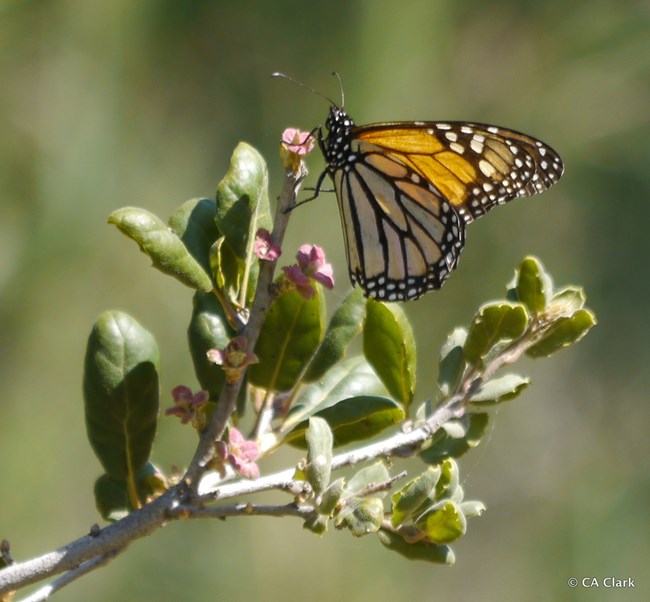Last updated: March 24, 2020
Article
Western Monarch Butterfly Numbers Remain Perilously Low

Paul G. Johnson / Photo 12708687 / 2017-9-21 / iNaturalist.org / CC BY-NC-SA
February 2020 - Last month, the Xerces Society reported the results of the 2019 Western Monarch Thanksgiving Count. The good news is that the monarch butterfly population overwintering in California did not decline further compared to the 2018 count. However, for a second year in a row, the count yielded fewer than 30,000 butterflies. That is less than 1% of the number of monarchs that overwintered in California in the 1980s. Estimates also indicate that the western monarch population being below 30,000 individuals puts it at risk of collapse.

© sea-kangaroo / Photo 2668247 / 2015-03-19 / iNaturalist.org / CC BY-NC-ND
While the cause of the population crash between 2017 and 2018 may have been late winter or early breeding season weather, or weather and habitat quality interactions, the western monarch population has been declining for decades. One reason has been loss of overwintering habitat. A recent analysis found that just in the last five years, 20 actively used overwintering sites have been seriously damaged or destroyed by human activities, and several more have been subjected to lesser impacts. Protecting and actively managing or restoring the overwintering sites that remain is one of the most straightforward, achievable, and effective ways to support western monarch butterflies going forward. Overwintering sites exist in Fort Baker and Fort Mason in Golden Gate National Recreation Area, and at Rob Hill in the Presidio of San Francisco. Other ways to support monarchs include planting native milkweeds (but NOT tropical milkweed, which can interrupt monarch migration) that monarchs need to breed, reducing pesticide use, and taking steps to combat climate change.
In addition, we are now in the midst of that crucial time between February and April when monarchs are leaving their overwintering groves and migrating towards their breeding grounds. However, scientists know very little about where western monarchs migrate and breed. Anyone spending time outside in California in the coming weeks can help! Recording your monarch and milkweed sightings using the Western Monarch Milkweed Mapper or iNaturalist sheds light on where the monarchs go so that ultimately, targeted actions can be taken to help their populations recover.
